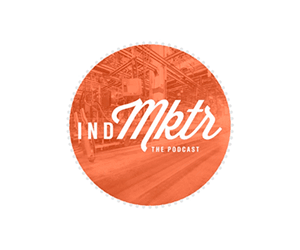If you’re anything like me, you work for clients that have multiple Ph.Ds in obscure technical fields such as encapsulated radioactive isotopes or nonwoven geotextiles. Part of our job as content marketers is condensing our client’s expertise into marketable web copy, sell sheets, brochures, videos, etc.
Unfortunately, many technical clients are far too busy with R&D to spend time talking to some pushy marketer about content marketing and value propositions. Well, fellow content marketer, follow these simple steps and clients will be BEGGING you to provide content because you’re such a damn pleasure to work with. But first, you may have to…
Sell Clients on Content
78% of people believe that organizations providing custom content are interested in building good relationships with them
Some clients understand the importance of content so many of you can skip this step. For the rest of us, we need to explain to clients that content = customers. Customers LOVE content and will happily provide contact information (and eventually money) in exchange for valuable content. You may want to remind clients of these interesting 2011 content facts, courtesy of the Custom Content Council:
- 90% of consumers find custom content useful
- 78% of people believe that organizations providing custom content are interested in building good relationships with them
- 61% of people feel better about a company that delivers custom content and are more likely to buy from that company
- 77% of people understand that an organization’s goal for custom content is to sell them something, but are OK with it as long as it provides value
Clients need to understand you’re on their side, actively trying to make them money and help them look good. It also helps to establish a little industry street cred; in order to accomplish this you need to…
Do Background Research
Nothing annoys clients/ruins credibility more than making them explain the basics of their industry. It’s your job to be semi-knowledgeable on their industry prior to scheduling your first client meeting. I’m not saying you have to become an expert overnight, but you should AT LEAST do the following:
- Read the client’s website (if you don’t do anything else, do this)
- Research at least 2 competitors and read their websites
- Thumb through at least one print or online industry publication
- Understand the client’s business and marketing objectives
- Know at least one industry-related joke or trending topic

My go-to chemistry joke.
Clients, especially the really smart ones, love voicing opinions on controversial industry topics. If you casually mention a recent industry-related trend, clients will involuntarily engage the reptilian complex of their Triune Brain (wiki on Triune Brain) and try to educate you on said trend. You instantly made a new friend and have a basis that will help you…
Build a Client Questionnaire
For the purposes of this example, I’ve outlined my questionnaire process for authoring individual web pages for a company site. I typically repeat these steps until I’ve completed a questionnaire for every page. However, these steps can be applied to any content asset (or life in general, really).
Protip: Before I create a questionnaire, I generally have an understanding of the client’s products/services, business objectives and user types (this is a process in and of itself).
Ok, so our pretend client manufactures widgets and has asked you to create content for a new website. At a bare minimum, you’ll need to create the following: home page, product overview page, product detail page, contact us page, about us/company page.
Let’s start with the product overview page. The purpose of this page is to provide a basic value proposition, a few supporting details and a path to the product detail page to give the reader a chance to buy something. To create a compelling product overview page, you’ll need to pick your client’s brain a bit using our trusty source content questionnaire:
- Who is the audience for this page?
- What are the value propositions/competitive advantages?
- What problem does this product solve?
- Where have customers typically gone to find more information on this product?
- Why should customer do business with your client?
- How do customers of this product typically measure success?
- Where are the majority of your customers located?
Now I’m not saying you should solely rely on these questions; this is just a STARTING POINT. Your research should allow you to ask more product-specific questions such as, “What are the specifications/tolerances for this widget,” “What is your process for manufacturing widgets,” etc.
I like to send questionnaires to cover at least four web pages at a time. I’ve found that four pages per week is the magic number that doesn’t overwhelm clients, yet still allows for steady progress. Adjust frequency accordingly based on your client’s schedule. Speaking of schedules, make sure you…
Schedule Weekly Meetings
Even the busiest client can devote 30-45 minutes to marketing if you plan a reoccurring weekly meeting around their schedule. The trick is to make the meeting go as smoothly as possible so the client doesn’t feel like their time was wasted. A butter smooth meeting requires you to do the following at least two days PRIOR to the meeting:
- Send a meeting agenda
- Send the questionnaire
- Provide a conference call-in number if multiple parties are involved
- Invite client to a meeting using an Outlook calendar or whatever your client uses
It’s unrealistic to think all your questions will be answered during these weekly meetings, so be sure to set the expectation to the client that you’ll be following up on unanswered/additional questions in subsequent emails. Ok, so now…
Let’s Recap
Some of these steps may seem obvious but I can’t tell you how much clients appreciate the professionalism. Repeat the questionnaire/weekly meeting process until you’re happy with the quantity/quality of the collected content. You’ll be doing yourself and your client a huge favor. If you need additional help, contact us at info@marketstrong.com.




